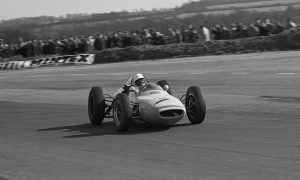… BUT NOT ALL THE WAY
However, the overall architecture of the V6, which was designed by Lorenzo Sassi under the stewardship of Mattia Binotto, has not been totally revised. The intercooler’s shape may have been slightly altered compared to 2014 (see above), but it still sits within the Vee of the engine. As a reminder, its Mercedes counterpart is lodged within the monocoque and ahead of the engine, while we have already mentioned Red Bull-Renault’s split-intercooler design, with one element featuring in each sidepod. As for Honda, the McLaren MP4-30 is fitted with a big intercooler in its right sidepod. Ferrari has gone for an air-to-water intercooler (like Mercedes) and placed it at the heart of its engine in order to free up some space in the sidepods, thus limiting airflow resistance.
This very neat and compact package allows having shorter pipework between the compressor and the intercooler – at least when compared to the Renault and Honda architectures. Such design theoretically reduces the infamous ‘turbo lag’. However, this installation might not be the best thermally speaking, since the intercooler is lodged between two banks of red-hot cylinders. But Ferrari engineers have managed to stave off any potential issues by improving the SF15-T’s overall cooling.
On the picture above, one can notice that the intercooler ducts are roughly covered with an insulating material in order to preserve the cooling air about to enter the plenum chamber.







